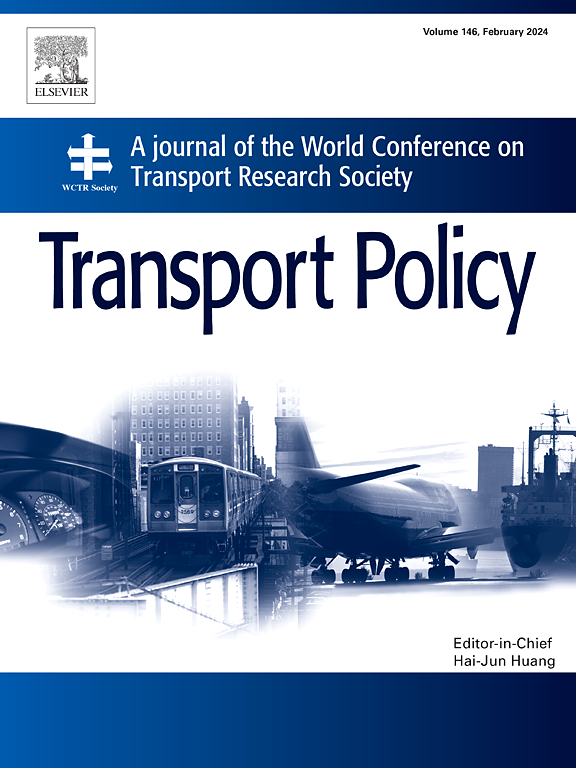Extending UTAUT2 for elderly high-speed rail adoption: Incorporating novel health and transportation independence moderators in an urban-rural comparative analysis
IF 6.3
2区 工程技术
Q1 ECONOMICS
引用次数: 0
Abstract
This study extends the Unified Theory of Acceptance and Use of Technology 2 (UTAUT2) by incorporating health status and transportation independence as novel moderators to examine high-speed rail adoption intentions among elderly populations in Thailand. Using structural equation modeling on survey data from 2936 elderly respondents (1470 urban and 1493 rural), this study investigated the determinants of adoption intentions and their variations across geographical contexts. Results reveal that social influence, facilitating conditions, and effort expectancy are the strongest predictors of behavioral intention in both urban and rural settings, while performance expectancy and price value showed non-significant effects, challenging conventional UTAUT2 assumptions. The extended model explains 65.0 % of variance in urban contexts versus 51.5 % in rural contexts. Health status demonstrates significant moderating effects on multiple relationships, particularly in urban settings, while transportation independence shows minimal moderation. Age moderates several relationships primarily in urban contexts, whereas gender shows no significant moderating effects. Hedonic motivation significantly influences rural but not urban adoption intentions. These findings challenge universal assumptions about technology acceptance and highlight the importance of context-specific approaches for elderly transportation technology adoption. The study contributes to theory by validating an elderly-specific UTAUT2 extension and provides practical implications for developing targeted strategies to enhance high-speed rail adoption across diverse elderly populations.
扩展老年人高铁采用UTAUT2:在城乡比较分析中纳入新的健康和交通独立性调节因子
本研究扩展了技术接受和使用统一理论2 (UTAUT2),将健康状况和交通独立性作为新的调节因素,以检验泰国老年人采用高铁的意愿。本研究利用结构方程模型对2936名老年人(城市1470人,农村1493人)的调查数据进行了分析,探讨了收养意愿的决定因素及其在不同地理背景下的差异。结果显示,社会影响、便利条件和努力预期是城市和农村环境中行为意愿的最强预测因子,而绩效预期和价格价值则表现出不显著的影响,挑战了传统的UTAUT2假设。扩展模型解释了城市背景下65.0%的差异,而农村背景下的差异为51.5%。健康状况对多种关系显示出显著的调节作用,尤其是在城市环境中,而交通独立性显示出最小的调节作用。年龄主要在城市环境中调节几种关系,而性别没有显着的调节作用。享乐动机显著影响农村收养意愿,但不影响城市收养意愿。这些发现挑战了关于技术接受的普遍假设,并强调了针对具体情况采用老年交通技术方法的重要性。该研究通过验证针对老年人的UTAUT2扩展为理论做出了贡献,并为制定有针对性的策略以提高不同老年人群体对高速铁路的采用提供了实际意义。
本文章由计算机程序翻译,如有差异,请以英文原文为准。
求助全文
约1分钟内获得全文
求助全文
来源期刊

Transport Policy
Multiple-
CiteScore
12.10
自引率
10.30%
发文量
282
期刊介绍:
Transport Policy is an international journal aimed at bridging the gap between theory and practice in transport. Its subject areas reflect the concerns of policymakers in government, industry, voluntary organisations and the public at large, providing independent, original and rigorous analysis to understand how policy decisions have been taken, monitor their effects, and suggest how they may be improved. The journal treats the transport sector comprehensively, and in the context of other sectors including energy, housing, industry and planning. All modes are covered: land, sea and air; road and rail; public and private; motorised and non-motorised; passenger and freight.
 求助内容:
求助内容: 应助结果提醒方式:
应助结果提醒方式:


